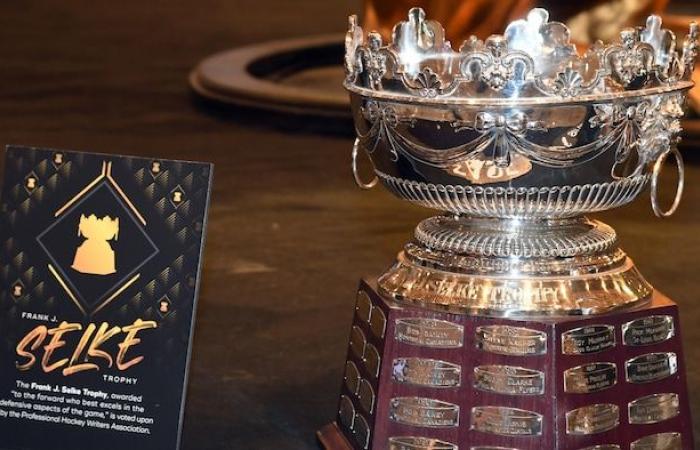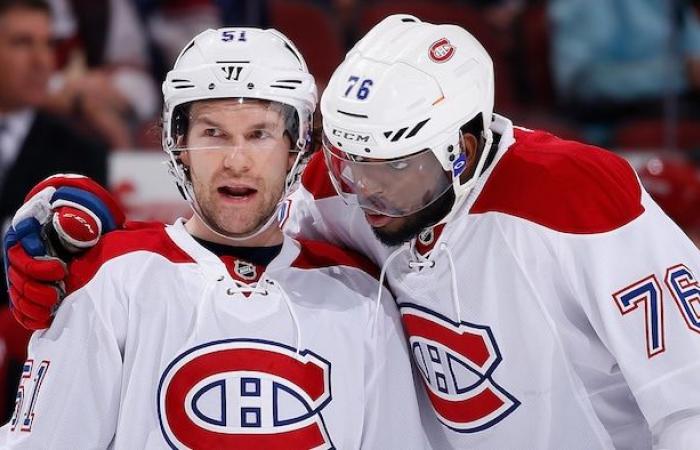Just like that, to supposedly “modernize” its arsenal of annual trophies, the QMJHL announced Tuesday that its trophy awarded to the most gentlemanly player would now bear the name of David Desharnais. In passing, the leaders of the Quebec junior circuit have therefore thrown the legendary Frank Selke into the background as if nothing had happened.
In addition to having forever marked the evolution of Canadian and Quebec junior hockey, Frank Selke is probably the most important architect in the history of the Montreal Canadiens. It is therefore incomprehensible that anyone could have believed that it was a good idea to rename
the trophy that bore his name since the creation of the QMJHL in 1969.
The trophies of most North American leagues are named after personalities who have marked their history.
In American college football, for example, the Heisman Trophy has been awarded to the season’s most valuable player since 1935. This trophy was established by the Downtown Athletic Club of New York. And since 1936, it has been named after John Heisman, who was the club’s first athletic director and a renowned football player and coach at the turn of the 20th century.
In 2024, very few people know who John Heisman was. And the opportunities modernize
the name of this trophy have probably not been lacking over the decades. But if such a thing happened, there would probably be a revolution among our southern neighbors. Because in the world of sport, respect for history and traditions is particularly valued.
***
By the same token, it’s easy to argue that the hockey players who will be participating in the next NHL season won’t be part of a spontaneous generation or a new show. Instead, they’ll be part of a perpetual story that has already been animated by Gordie Howe and Maurice Richard, Guy Lafleur and Wayne Gretzky, Mario Lemieux and Sidney Crosby, and now Connor McDavid.
McDavid came to the NHL as Crosby’s successor as the best player in the world. When he first started, Sid the Kid
was Lemieux’s teammate, who himself was Gretzky’s great rival. The arrival of the Wonder
coincided with the decline of Lafleur.
THE Blonde Demon
was the teammate of Henri Richard who, in his early days in the mid-1950s, had faced Gordie Howe’s Red Wings and won five consecutive Stanley Cups with his brother Maurice and Jean Béliveau.
In short, in four or five degrees of separation, we easily make a leap of 80 years through time. There is no break in history.
When we name a trophy in someone’s honor, we do so to highlight the major role that this personality played in said history. And we do it specifically to perpetuate in time the memory of his contributions.
This is also why many sports organizations create pantheons or erect statues in the image of their greatest heroes.
***
Now, Frank Selke was one of the most important figures in the history of Quebec hockey. The first leaders of the QMJHL did not come from Mars when they decided to highlight his immense contribution at the end of the 1960s.
The former Maple Leafs executive arrived with the Canadiens in the summer of 1946 after resigning as assistant general manager in Toronto. And shortly after arriving in Montreal, Selke implemented a sponsorship system that allowed NHL teams to better identify and develop young talent.
A key part of his plan was to convince the Canadian Minor Hockey Association to prevent top junior-age talent from being transferred from province to province by professional teams.
Rather than seeing the country’s top prospects crammed into a handful of Ontario teams, he believed Canadian hockey would maximize more talent if each province established a league of eight to 10 teams.
This idea eventually paved the way for the existence of the Western and Ontario leagues and eventually the QMJHL.
Open in full screen mode
The NHL also honored Frank J. Selke by dedicating the trophy to him as the best defensive forward.
Photo: Getty Images / Ethan Miller
***
Selke also embraced the concept of sponsoring minor teams with such conviction that at one time the CH had some 750 affiliated teams (10,000 players) in North America and particularly in Quebec!
In the 1950s, Selke’s vast recruiting network brought in young talents like Béliveau, Geoffrion, Henri Richard and Dickie Moore. They joined a then 34-year-old Maurice Richard, and the dynasty of five consecutive Cups was born.
The Habs won six championships during Frank Selke’s reign. And when Selke was forced into retirement in 1964, the organization was handed over to his right-hand man Sam Pollock. As a scout and director of player development, Pollock had been immersed in the vast system Selke had set up.
The NHL began instituting a draft in 1963. But because of the mind-boggling tree of clubs Selke had created, there was probably no other NHL executive with as much knowledge of the field and a more developed network of contacts as Pollock.
And that’s probably why Pollock pulled off so many hot trades during his career. That mastery of information channels allowed Pollock to build the 1970s dynasty and win nine Stanley Cups in 14 years as general manager.
Ultimately, it can be said that the rich history of Quebec hockey and the Canadiens would not be the same if Frank Selke had not settled in Quebec in the mid-1940s.
Open in full screen mode
David Desharnais and PK Subban in 2016
Photo: Getty Images / Christian Petersen
Even though David Desharnais is indeed a perfect gentleman who made his mark in the QMJHL and who showed impressive determination to reach the NHL, seeing Frank Selke’s name being tossed into oblivion in the name of modernity defies all logic.
After changing the name of their league last year (the Quebec Major Junior Hockey League became the Quebec Maritime Junior Hockey League), the leaders are therefore continuing to erase their own memory and their own history.
This is the most incomprehensible aspect of the mandate of the new QMJHL commissioner, Mario Cecchini.







